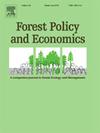A natural experiment: Assessing the impact of the COVID-19 pandemic upon forest recreation use and preferences in Ireland
Abstract
This study surveyed 292 visitors to eight recreational forests during the COVID-19 pandemic to investigate whether the pandemic had a stimulatory effect on visitation rates. An increase in visitation was noted, with existing visitors visiting more frequently. Many indicated that they planned to continue to visit more and the enjoyment they gained from the recreational experience was high. Few novel visitors were encountered. Using logistic regression, employed individuals and those working in the ‘Office/Education/Health’ sector were found to be significantly more likely to increase the frequency of their visits during the pandemic than those unemployed or working in other sectors; the opposite was true for older visitors. Using a panel regression model, it was found that increasing distance to a recreational forest was inversely related with level of preference; broadleaf forests and forests containing recreational facilities were positively correlated with level of preference. Visitors tended to have higher education levels than the population at large. They also did not generally travel far to reach a recreational forest and predominantly travelled by car. The results support the expansion of the forest estate near public transport and urban areas to maximise opportunities for forest recreation. They also highlight that more needs to be done to attract new visitors to forests and to expand the diversity of visitors.

 求助内容:
求助内容: 应助结果提醒方式:
应助结果提醒方式:


